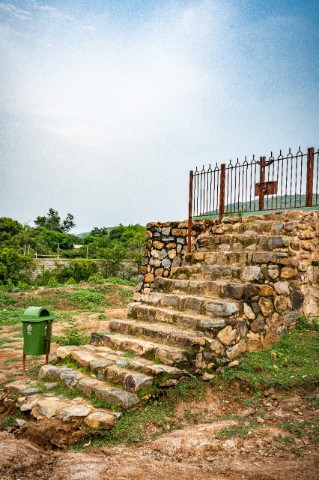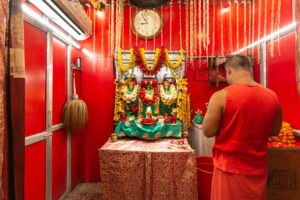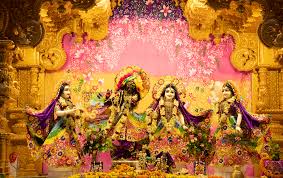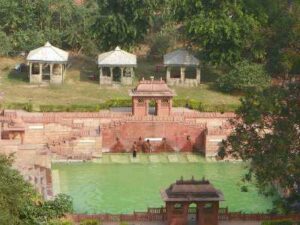How to make the most of your Visit to Jarasandh Ka Akhara, Rajgir

Introduction
Located within the scenic hills of Rajgir, Jarasandh Ka Akhara is a historically important and culturally interesting place in Bihar. The area is said to be the site of the ancient wrestling pit of Jarasandh, the mighty king of the Magadh area during Mahabharata. The remnants of Jarasandh Ka Akhara are a quiet witness to the royal splendor and sporting culture of ancient India. Now, the site gives the visitor an insight into a world of legend, history, and adventure and is a destination that history lovers and tourists exploring India’s heritage cannot afford to miss.
In this guide, we will cover everything you need to know about Jarasandh Ka Akhara, from its historical significance to tips for your visit.
What is Jarasandh Ka Akhara?
Jarasandh Ka Akhara is a site from ancient times considered to be the royal akhara in which King Jarasandh, the renowned figure from the Mahabharata, wrestled. Hindu myth tells that Jarasandh was an eminent king of the Magadh dynasty of olden times and famous for his force, valor, and gallantry. He was a notable supporting king of the Kauravas at the Kurukshetra battle too.
The place is usually remembered for Jarasandh’s mythical strength and his rigorous practice for war. The Akhara, or arena, was where fighters, including Jarasandh himself, did their intense body training, wrestled, and practiced martial arts. Now, the ruins of this ancient arena continue to be visited by tourists, who get to know more about its historic past and have the serene pleasure of the landscape around.
The place is said to be situated at the top of a hill within Rajgir, which surrounds the location in an aura of mysticism by fusing its historical grandness with nature.
Jarasandh was a significant character in the Mahabharata. He was the king of the kingdom of Magadh and is known for his strength and ambition. His wrestling arena, Jarasandh Ka Akhara, was a site where he and his army practiced for war and physical strength. Jarasandh’s reputation as a warrior spread throughout India, and he was an integral part of the circumstances leading to the Mahabharata war.
Jarasandh’s support for the Kauravas and his conflict with the Pandavas was one of the important settings of the Mahabharata. While the major accounts of his reign and life are found in mythology, the Akhara brings in a sense of reality to his name. His wrestling abilities were unparalleled, according to legend, and this stadium was where he trained for war, both in body and mind.
The archaeological site is now a testament to the sports culture of ancient Indian warriors and royalty. Not only does it link us to the mythical Jarasandh, but it also gives us a glimpse into the history and culture of Magadh, an ancient kingdom that was a cultural and political center in India.
What to See at Jarasandh Ka Akhara

- Wrestling Arena
The primary attraction at Jarasandh Ka Akhara is the wrestling arena, where it’s believed that King Jarasandh and other warriors trained for battles. Though much of the arena has been eroded with time, remnants of the structure still stand. The arena was likely an open space surrounded by stone seating or platforms, allowing spectators to watch the wrestlers in action. - Ruins of Ancient Structures
The location has a series of ruins scattered over the hill. Some of the structures are stone foundations, while others are small chambers or rooms, perhaps for storage or resting by the warriors. These ruins testify to the architectural genius of the period, though they have been worn out by centuries of exposure to the elements. - Beautiful Surroundings
The location is on a hilltop, with wide views of the surrounding Rajgir Valley and hills. The peaceful surroundings are ideal for a quiet visit and offer a chance to enjoy the natural beauty of the area. The surrounding foliage, quiet environment, and fresh air make it a quiet place for tourists and nature enthusiasts. - Stone Inscriptions and Carvings
In certain areas of the Akhara, you can see stone carvings and inscriptions. These remains may not be fully readable but suggest the importance of the site in the past. Some of the inscriptions are believed to speak of the bravery of Jarasandh and the warriors who were trained at this location.
How to Reach Jarasandh Ka Akhara
By Air:
The nearest airport to Rajgir is in Patna, around 95 kilometers away. Patna is well-connected to major cities across India, and from there, you can hire a taxi or take a bus to Rajgir.
By Train:
The nearest railway station to Jarasandh Ka Akhara is Rajgir Railway Station, which is about 4-5 kilometers away from the location. The station has good connectivity to all major cities in Bihar and surrounding states. After reaching Rajgir Railway Station, you can reach the location by auto-rickshaw or taxi.
By Road:
Rajgir is easily accessible by road from Patna and the other surrounding cities. If you are coming from Patna, you may take a bus or hire a taxi. The journey to Rajgir is pleasant, crossing through lovely sceneries and countryside villages, and hence worth the ride.
Timings and Ticket Information
- Timings:
The location of Jarasandh Ka Akhara is accessible to tourists from morning until evening. But visiting in the daytime would be a better option to experience the views and greenery around. - Entry Fees:
There is typically no official entry charge for a visit to Jarasandh Ka Akhara, although tourists might need to pay a small fee for parking or for guides who explain the site’s historical and mythological importance in detail.
Best Time to Visit
The ideal time to visit Jarasandh Ka Akhara is in the cooler months of October to March, when Rajgir’s weather is pleasant and ideal for outdoor sightseeing. The summer season (April to June) is hot, with temperatures soaring above 40°C, so it is not the best time to visit. The monsoon season (July to September) is also not very predictable, with heavy rain and slippery trails that might spoil your visit.
Things to Keep in Mind
- Wear Comfortable Footwear:
The location has some rough paths, so it’s best to have comfortable shoes or sandals with proper grip for an easy walk. - Water and Snacks:
Bring a water bottle to keep you hydrated, especially if you’re going to walk around the site for a long time. Although there are vendors scattered around town, it’s always best to bring your own snacks and personal items. - Be Respectful of the Site:
Since the site is historic and cultural in nature, be respectful of the site and not disturb the remains or leave trash behind. - Guides:
There are local guides available who can share detailed information about the history, mythological association, and significance of the site. It may be a good idea to hire a guide for a more immersive experience, if you’re particularly interested in understanding Jarasandh’s heritage. - Photography:
You’re permitted to take photographs at the site, so don’t leave your camera behind to preserve memories of the landscape and historical artifacts of the Akhara.
Nearby Attractions
- Vishwa Shanti Stupa (World Peace Pagoda): Close by, this stupa is a significant Buddhist monument that provides spectacular views of the Rajgir hills.
- Rajgir Hot Springs: Following your trip to Jarasandh Ka Akhara, you can unwind in Rajgir’s curative hot springs, which have been on the town’s history for centuries.
- Nalanda University Ruins: Just a short distance from Rajgir, you can visit the Nalanda University Ruins, an ancient seat of learning that once drew scholars from across the globe.
- Gridhakuta Hill (Vulture’s Peak): A place connected with Buddha’s teachings, the hill gives stunning views and is filled with Buddhist history.
Conclusion
Jarasandh Ka Akhara is not just a historical site but a place that makes history come alive. The ruins provide a profound sense of India’s royal past and mythology, and the views around them contribute to the experience. Whether you are a history buff, a mythology enthusiast, or just a traveler discovering the unknown treasures of Bihar, a visit to this intriguing site will take you back to the days of kings, warriors, and legends.




